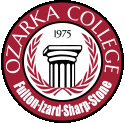Protecting Yourself On-Line
The following tips from George Mason University Sexual Assault Services was taken from an article entitled Cyber Stalking: Danger on the Information Highway and can be found on the National Center for Victims of Crime webpage under the Stalking Resource Center at http://www.ncvc.org/src/AGP.Net/Components/DocumentViewer/Download.aspxnz?DocumentID=33858.
In order to better protect yourself on-line:
1. Use a gender-neutral screen name.
2. Never give your password to anyone, especially if someone sends you an instant message
(IM).
3. Don’t provide your credit card number or other identifying information as proof of age to
access or subscribe to a web site run by a company with which you are unfamiliar.
4. Tell children not give out their real name, address, or phone number over the Internet
without permission.
5. Use a free e-mail account such as Hotmail (
www.hotmail.com) or YAHOO!www.yahoo.com) to pass messages in newsgroups, mailing listings, enter chat rooms, fill
(Tips #1 – 8 were developed by the George Mason University Sexual Assault Services, 1999.)
(
out forms, or correspond with someone you don’t know well.
6. Don’t give your primary e-mail address out to anyone you don’t know.
7. Spend time on newsgroups, mailing lists, and chat rooms as a “silent” observer before
“speaking” or posting messages.
8. When you do participate on-line, only type what you would say to someone in person.
9. Don’t respond to e-mail from a stranger; when you reply, you are verifying your e-mail
address to the sender.
10. On a regular basis (at least once a month), type your name into Internet search engines to
see what information, if any, pops up. To have your name removed from any directories,
contact each search engine on which you are listed and request to be removed.

